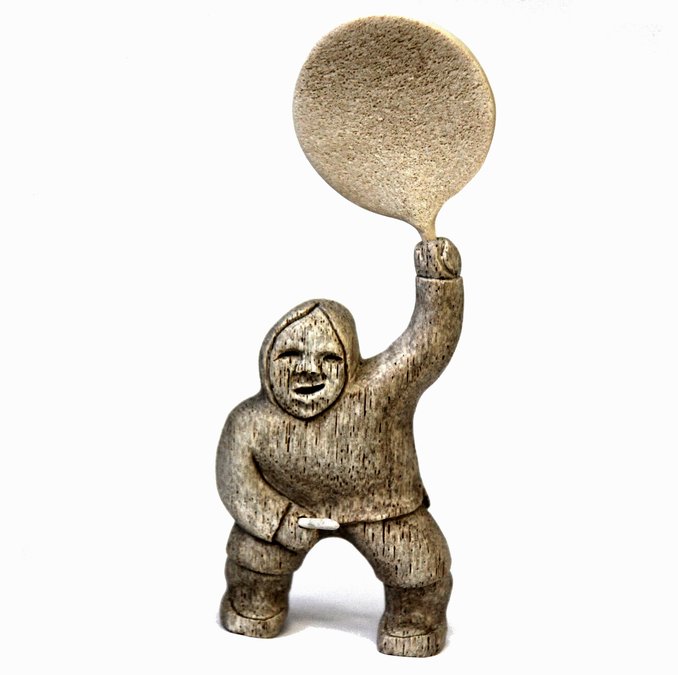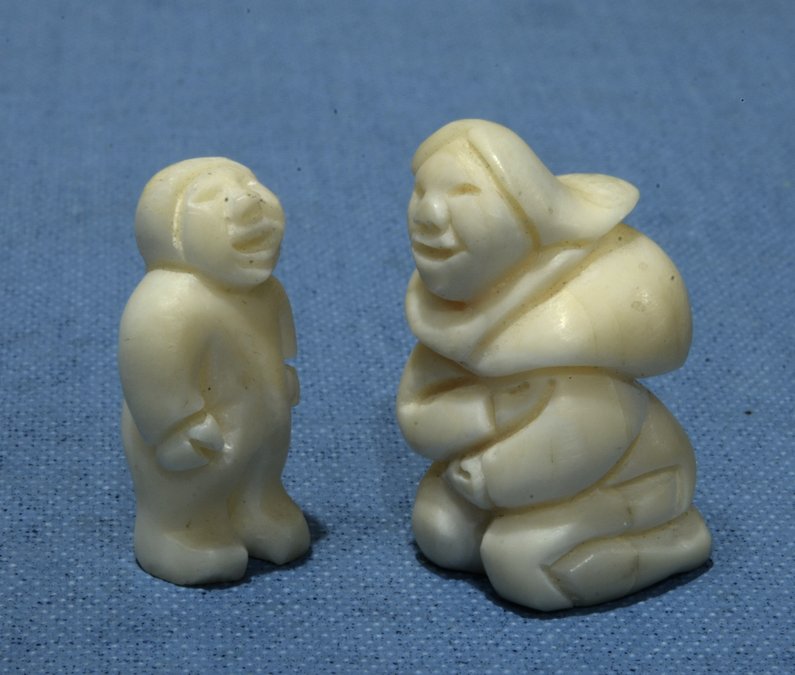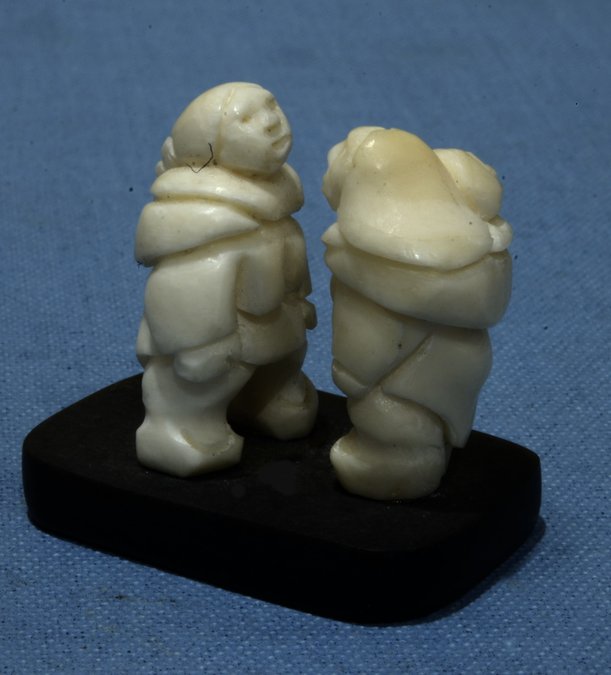Inuit Art collected by Andrew and Chris Perry
On this page...
Inuit are culturally similar Indigenous peoples inhabiting the Arctic and subarctic regions of Labrador, Quebec, Nunavut, the Northwest Territories in Canada, as well as Alaska and Greenland. They adapted to one of the Earth’s most extreme environments, with a semi-nomadic hunting and fishing way of life. Inuit languages, lives, health and customs have been profoundly disrupted through the twentieth century, although many traditions continue.
During their travels in Canada, Chris and Andrew Perry discovered the subtle beauty and narratives of contemporary Inuit art, especially miniature bone carvings and stories conveyed in prints on paper. They assembled a collection of carvings and prints, and in 2017 made a generous offer of donating it to the Australian Museum (AM) via bequest. Since 2018 they have also donated several bone carvings by Silas Kayakjuak (Qayaqjuaq).
Silas Kayakjuak is a well-known Inuit artist, born in 1956. He produces small carvings in stone and bone and works are mostly focused on the exploration of the human figure in the context of traditional and contemporary Inuit life. Kayakjuak, a child of Inuit artist, began carving as a boy. His carvings reflects his personal experience of hunting and travelling and stand in the long tradition of this art-form, which developed from the original creation of spiritual ritualistic objects.
Kayakjuak’s carvings are welcome additions to the AM’s Inuit material, showing continuity in the long tradition of this art form. A small ivory bird charm or amulet (H151) collected by Captain James Cook in the 1770s is the oldest representation of this tradition in our collection. Several other pieces by unknown artisans date to the late 19th century and the first half of the 20th century. Silas’s carvings complement this small assemblage of carved figures, made by a contemporary and well-known artist with personal experience in traveling Inuit lands and intimate familiarity with their way of life.





